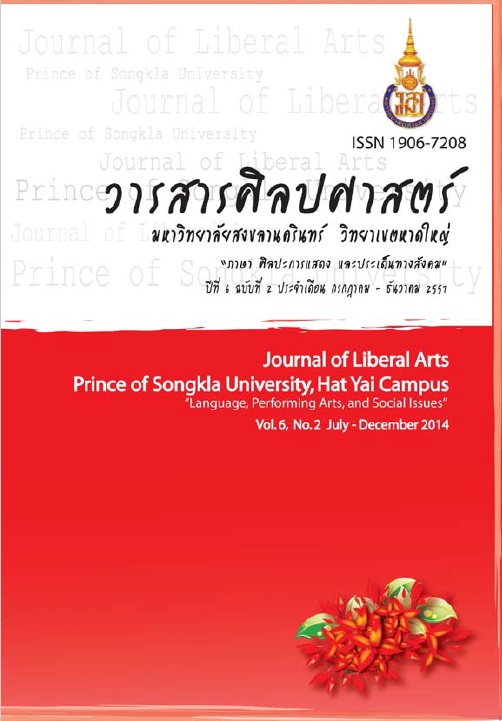The conserved woodland : Culture of a conserved woodland of Khuanso community
Keywords:
tradition of woodland conservation, Khuanso Community, conserved woodlandsAbstract
This research work attempted to investigate the background of woodlands and the tradition of utilizing the forest by Khuanso Community, Khuan Niang District, Songkhla Province. The data of this qualitative research were collected from in-depth interviews with seven community leaders, and focus group discussions with ten locals of Khuanso Community.
The study found that the conserved woodlands of Khuanso Community were important natural resources for the community’s way of life because the woodlands were utilized as sources of food, occupations, building materials, and as recreation areas. The conserved woodlands were like the life of the community because the community depends on them. Therefore, the community has had the tradition of conserving the woodlands; they do not cut melaueca trees until they are fully grown or large enough for use. The woodlands have been looked after by people in the community who use their wisdom in managing the resources and utilizing them along with conserving them in order to make the woodlands fertile and naturally sustainable.
However, with development and management by government organizations, Khuanso Community can no longer utilize the conserved woodlands the same way as they used to, and there are capitalists who illegally cut trees for use in factories. People in the community no longer feel they are the owners of the conserved woodlands, and as a result the tradition of woodland conservation has gradually been weakened.
Downloads
How to Cite
Issue
Section
License
The authors retain the copyright to their article but the Journal of Liberal Arts, Prince of Songkla University reserves the exclusive rights to first publication.




